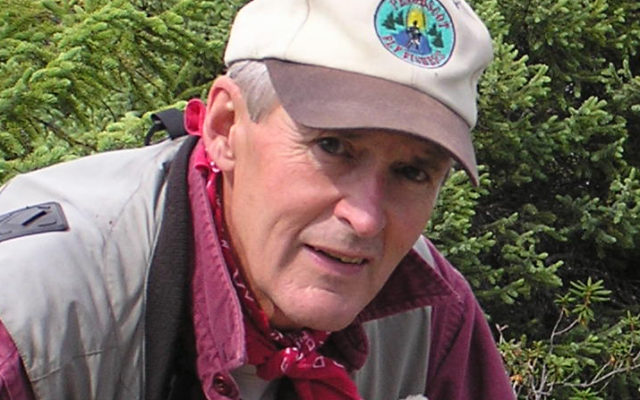
The cost of salmon recovery keeps going up
By V. Paul Reynolds
Over the years so much Federal and private money has been spent in the U.S. trying to recover our Atlantic salmon, which is an endangered species, that the total monetary figure is elusive. It is in the millions and millions of dollars.
According to the Atlantic Salmon Federation, “The Recovery Plan itself estimates that it could take up to 75 years, or 15 generations, for salmon to meet the recovery criteria and be removed from the endangered species list. The Plan also estimates that an additional $24.6 million per year (beyond the current $8.6 million in federal funding) will be necessary to implement priority recovery actions between 2019 and 2023. After that, the plan estimates it could take several hundred million dollars over the next 75 years to address the major threats and recover the species.”
The question begs to be asked: How much is enough? When do you declare it a lost cause, or do you ever stop trying? Dwayne Shaw, director of the Downeast Salmon Federation (DSF), answers the question this way. “We could recover salmon and all sea-run fish along with them if it was made a higher priority and we could do it in less time than 75 years. I have no interest in seeing massive sums spent on exploring Mars while we continue to soil our own nest and squabble over the “cost.”
The average taxpayer, who believes in well-reasoned, good-faith efforts to prevent species extinction, is entitled to make this observation: “Well, we need to see some progress, some light at the end of the tunnel if we are going to keep allocating tax dollars for any good cause.” In his book published in 1997, Maine salmon fisheries scientist Ed Baum said that, since 1900, more than 96 million Atlantic salmon had been stocked in Maine rivers.
The Atlantic Salmon Federation (ASF) gets high marks for its resolve and tenacity against tough odds in trying to save the salmon. In 2019, ASF paid Greenland commercial salmon fishermen $4 million to reduce their commercial take by 50 percent. This was done once before and it did seem to help fish recovery in Maine, at least temporarily.
When it comes to success stories with Atlantic salmon recovery nothing can hold a candle to the salmon return on the River Tyne in Great Britain. The River Tyne was once a flowing sewer, and is now thriving as a salmon fishery that annually sees upwards of 32,000 sea-run salmon in its system. Check it out online. Recreational salmon fishing is once again big business on the River Tyne! How did they do it?
As Shaw tells it, the Brits rolled up their sleeves. Government and volunteer groups worked tirelessly. They fixed pollution sources, cleaned up the river, removed dams, repaired habitat, and limed the waterway. And they spent lots and lots of money to make it happen. And it did not take 75 years!
Under Shaw’s direction, the Downeast Salmon Federation (DSF) is borrowing from the River Tyne playbook in hopes of promoting recovery success on the Downeast salmon rivers. DSF is raising salmon as if they were in the wild using stream side parr-rearing units much like what was done on the River Tyne with stream side parr-rearing units. These wild-raised adult salmon return from the sea to spawn at up to 14 times the rate of fish raised and stocked using other hatchery techniques.
In a few years, when DSF’s salmon become adults, the plan is to stock these wild-raised fish in Maine rivers in hopes of getting a better return than has been experienced with hatchery fish.
__
The author is editor of the “Northwoods Sporting Journal.” He is also a Maine guide and host of a weekly radio program — “Maine Outdoors” — heard Sundays at 7 p.m. on “The Voice of Maine News – Talk Network.” He has authored three books; online purchase information is available at www.maineoutdoorpublications.com. or www.sportingjournal.com. Contact email — vpaulr@tds.net.